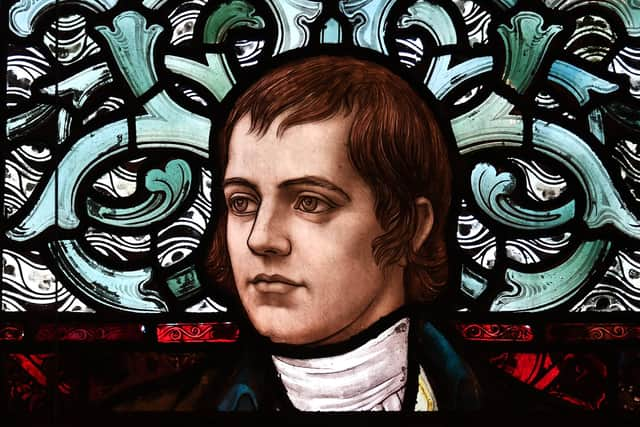Nostalgia - The Bard and his links to the Kingdom of Fife


He only visited the Kingdom briefly as an eighteenth century tourist, but there are several strands in the tapestry of his life which tie him to Fife.
Burns kept a diary of his 1787 Highland tour which was spent in the company of his “good friend Mr Nicol”, an Edinburgh schoolmaster.
Advertisement
Hide AdAdvertisement
Hide AdWhen staying in Edinburgh, Burns would have been used to seeing Fife just across the Firth of Forth, but he noted specially in his diary the “pleasant view of Dunfermline and the rest of the fertile coast of Fife, as‘ we go down to that dirty, ugly place, Burrowstones (Bo’ness)”.
This view was seen by the travellers shortly after they had left Edinburgh and were en route for Linlithgow and Stirling.
October of the same year saw Burns back again in Fife with another friend, Dr James Adair, in the course of making a tour of Stirlingshire.
Burns and Adair visited the Abbey Church in Dunfermline, and the poet saw with emotion what was then – wrongly – thought to be the grave of Robert the Bruce.
Advertisement
Hide AdAdvertisement
Hide AdThe tour finished on October 20, with the two friends returning to Edinburgh once more by Oueensferry.
The preserving and collecting of old Scottish songs, ballads and lyrics, their polishing and setting to appropriate Scottish tunes, was a passion with Robert Burns until he died.
Often those old Scottish folk songs survived only through oral tradition and were fragmentary when Burns came across them.
Then Burns would compose missing lines and verses, reshaping and making complete the old songs in his own inimitable way, as he did with an old Fife folk song:
“Up ‘wi’ the carls of Dysart,
And the lads O’ Buckhiven,
And the ‘kimmers 0’ Largo,
And the lasses of Leven.”
Advertisement
Hide AdAdvertisement
Hide AdIt was the collecting of these songs, words and music, which linked Burns with George Thomson and Captain Andrew Erskine, youngest son of the Fifth Earl of Kellie, near Pittenweem.
Thomson was born in 1757, the son of a Limekilns schoolmaster and grew up to play in the orchestra at the St Cecilia Concerts In Edinburgh.
He conceived the idea of publishing a collection of Scottish songs with words acceptable to polite society and asked Burns to contribute. When the first part of Volume One of Thomson’s “Select Scottish Airs” was published in 1793, it contained 25 “exquisite new songs” by Burns.
It is estimated that Burns provided Thomson with around 114 songs all told.
Advertisement
Hide AdAdvertisement
Hide AdCaptain Erskine, also helped Thomson with his ‘Select Scottish Airs’, but tragically, the man described by Burns as “my much valued friend”, drowned himself in the Forth that same year, overburdened with a huge volume of debt.
Burns would continue to contribute to his Fife friend’s collections until his own death just three years later on July 21, 1796, at the age of 37.The first volume was the only once released during his lifetime.